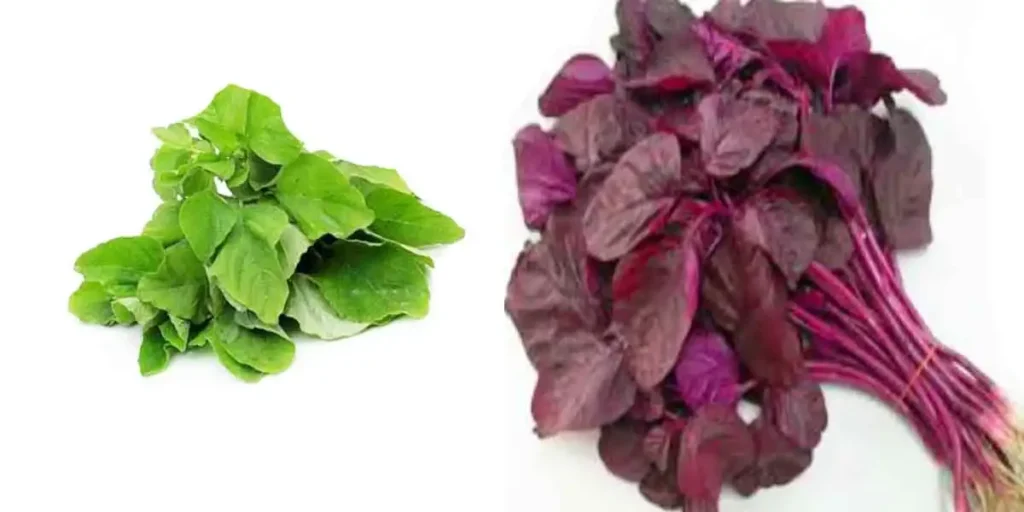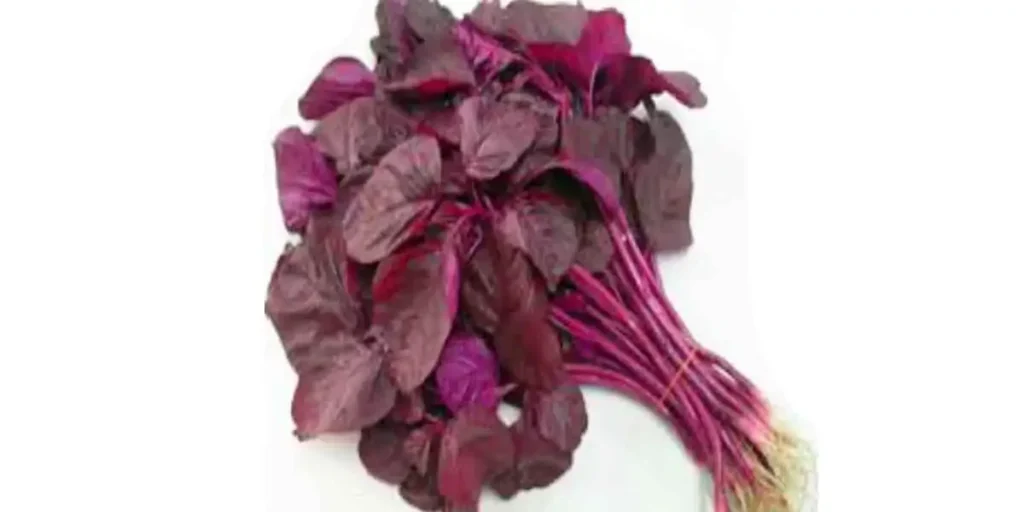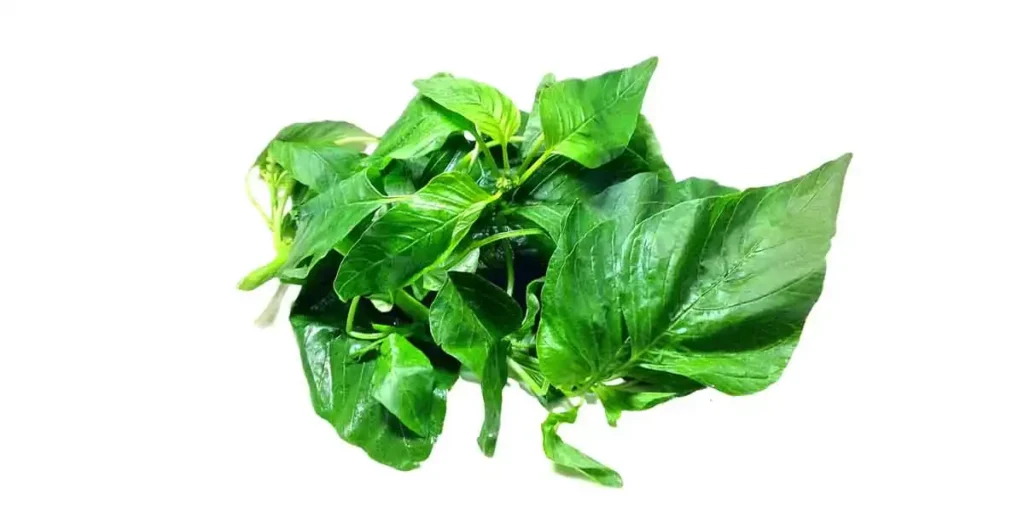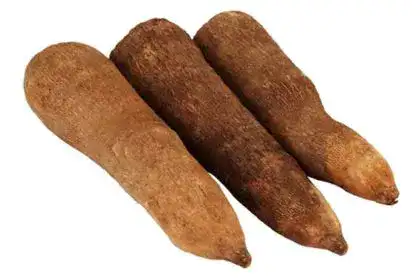Thotakura, an ancient leafy vegetable deeply intertwined with culinary traditions, has transcended time as a cherished ingredient in regional cuisines. With its revered flavor and versatility, Thotakura has delighted taste buds for generations.
Its vibrant green leaves and subtle tang not only enhance the visual appeal of dishes but also offer a plethora of health benefits.

Bursting with essential nutrients like vitamins, minerals, and dietary fiber, Thotakura contributes to a well-rounded and nourishing diet. The tender leaves lend themselves effortlessly to various preparations, adding depth and character to curries, stir-fries, and salads.
What sets Thotakura apart is its ability to harmonize with a wide range of ingredients, allowing for endless creative possibilities. Whether combined with other vegetables, mixed with lentils for hearty dishes, or used as a component in savory snacks, Thotakura brings its unique essence to every recipe, imparting not just flavor but cultural significance as well.
The upcoming article provides a comprehensive overview of thotakura, encompassing essential information such as the thotakura in English Name, its price, health benefits, and nutritional value.
Additionally, it delves into the exploration of various thotakura varieties, popular recipes, availability, and more. The main objective of this article is to offer readers a comprehensive understanding of thotakura and its significance in the culinary world.
| English name | amaranth greens |
| Kingdom | Plantae |
| Clade | Tracheophytes |
| Clade | Angiosperms |
| Clade | Eudicots |
| Order | Caryophyllales |
| Family | Amaranthaceae |
| Subfamily | Amaranthoideae |
| Genus | Amaranthus |
Thotakura in English name
The meaning of thotakura in English is the leafy vegetable known as amaranth greens. Amaranth greens, belonging to the Amaranthaceae family, are a versatile and nutritious group of leafy vegetables. With their vibrant green color and slightly tangy taste, they lend a unique flavor to various culinary creations.
Packed with essential nutrients like vitamins as well as iron and calcium, they offer numerous health benefits. Amaranth greens are widely used in traditional cuisines worldwide, valued for their ability to enhance the nutritional value of meals. Beyond their nutritional benefits, these greens are celebrated for their culinary adaptability.
They can be incorporated into salads, soups, stews, stir-fries, and even serve as a spinach substitute. Their tender leaves cook quickly and can be enjoyed both raw and cooked, providing a delicate yet robust flavor that complements a range of ingredients.
Additionally, amaranth greens have a rich cultural history and have been cultivated and consumed for centuries. From ancient civilizations to contemporary culinary practices, they continue to be cherished for their taste, versatility, and health benefits.
In conclusion, amaranth greens, known as thotakura, are leafy vegetables that bring a multitude of benefits to the table. Their vibrant color, tangy taste, and nutritional richness contribute to the visual appeal and overall healthfulness of meals.
Whether utilized in traditional recipes or innovative culinary creations, amaranth greens have earned their status as a versatile and valuable ingredient in the culinary world.
Some Products of Thotakura
Click here to Check Some products of thotakura on amazon.
Some photo of thotakura


Health benefits of thotakura
1. High in fiber
The benefits of thotakura, a leafy vegetable, extend beyond its delicious flavor, as it provides numerous health benefits, primarily due to its high fiber content. Fiber, a vital nutrient, plays a crucial role in maintaining digestive well-being and ensuring regular bowel movements, effectively preventing constipation and promoting a healthy digestive system.
This is because fiber aids in reducing cholesterol levels, improving blood pressure management, regulating blood sugar levels, and enhancing insulin sensitivity. Additionally, research suggests that a high-fiber diet may lower the chances of certain cancers, particularly colorectal cancer.
Thotakura’s fiber content supports a favorable gut environment, facilitating proper digestion and minimizing harmful substances in the colon. By incorporating thotakura into various dishes like salads, soups, stews, or stir-fries, individuals can savor its delightful flavor while boosting their fiber intake, ultimately promoting overall health and well-being.
Adding thotakura to a well-balanced diet can be a wise choice, contributing to improved digestive health and a reduced risk of chronic diseases.
2. Low in calories
Thotakura, a leafy vegetable, is a remarkable addition to a healthy diet due to its low-calorie content and abundant nutritional benefits. It provides essential vitamins A, C, and K, supporting immune function, healthy skin, and proper blood clotting, while also offering important minerals like iron and calcium for strong bones, muscle function, and oxygen transport.
Furthermore, its high fiber content aids digestion, promotes satiety, and assists in weight management. By incorporating thotakura into meals, you can enjoy a flavorful and nutrient-dense option that supports overall well-being. Pairing it with lean proteins, whole grains, and healthy fats maximizes its benefits, and exploring different cooking methods adds variety.
Whether your goal is weight management, general health support, or simply relishing a tasty and nourishing meal, thotakura is an exceptional choice for a wholesome eating plan.
3. Good for anemics
Thotakura, a leafy vegetable, is a remarkable addition to a healthy diet due to its low-calorie content and abundant nutritional benefits. It provides essential vitamins A, C, and K, supporting immune function, healthy skin, and proper blood clotting, while also offering important minerals like iron and calcium for strong bones, muscle function, and oxygen transport.
Furthermore, its high fiber content aids digestion, promotes satiety, and assists in weight management. By incorporating thotakura into meals, you can enjoy a flavorful and nutrient-dense option that supports overall well-being. Pairing it with lean proteins, whole grains, and healthy fats maximizes its benefits, and exploring different cooking methods adds variety.
4. Boosts immunity
Thotakura, a leafy vegetable, is renowned for its ability to enhance the immune system, making it a valuable inclusion in a wholesome eating plan. The immune system is important in safeguarding the body against infections and diseases.
Thotakura is abundant in essential vitamins and minerals that promote immune function, including vitamin C, vitamin A, and antioxidants. Vitamin C is widely recognized for its immune-boosting properties as it stimulates the production of white blood cells, which are crucial defenders against pathogens.
Vitamin A aids in preserving the integrity of the skin and mucous membranes, acting as a protective barrier against harmful bacteria and viruses. The antioxidants present in thotakura, such as beta-carotene, shield cells from damage and reinforce the immune system. By incorporating thotakura into meals, individuals can bolster their immune response and reduce the risk of infections.
However, it is important to note that a comprehensive approach to immune health, encompassing a balanced diet, regular exercise, sufficient sleep, and effective stress management, is essential for overall well-being.
5. Rich in potassium
Thotakura, a leafy vegetable abundant in potassium, offers a wide array of health benefits. Potassium, an essential mineral, plays a crucial role in maintaining optimal bodily functions. It supports functioning of the heart and muscles, regulates blood pressure, and helps balance fluids in the body.
Thotakura’s high potassium content makes it a valuable addition to a healthy diet, promoting overall well-being. By incorporating thotakura into meals, individuals can naturally increase their potassium intake and enjoy the associated advantages.
It’s important to maintain a balanced diet and seek personalized guidance from a healthcare professional, especially for individuals with specific health concerns.
6. Rich in protein
Thotakura, a leafy vegetable, is not only a delicious addition to meals but also offers a substantial amount of protein, making it an excellent choice for a well-rounded diet. Protein is a vital dietary component that plays a fundamental role in the growth, repair, and maintenance of tissues in the body.
Thotakura contains a notable quantity of protein, providing the necessary building blocks for muscle development, organ function, and enzyme synthesis. By incorporating thotakura into your meals, you can increase your protein intake, which supports overall health and well-being.
However It’s crucial to keep in mind that although thotakura adds to your protein intake, it’s recommended to include a mix of protein sources to ensure you a wide range of essential amino acids.
To meet your protein needs and support overall well-being, you can combine thotakura with lean meats, legumes, nuts, and various plant-based protein options. This approach helps you achieve a diverse array of nutrients and promotes optimal health.
7. Reduces bad cholesterol
Including Thotakura in your diet can positively impact your cardiovascular well-being by reducing LDL cholesterol, commonly known as the “bad” cholesterol. Elevated levels of LDL cholesterol can increase the risk of heart disease and other cardiac conditions.
Thotakura contains beneficial compounds and nutrients that aid in lowering LDL cholesterol, such as dietary fiber and plant sterols. The dietary fiber found in Thotakura acts by binding to cholesterol, aiding in its elimination from the body, and the plant sterols in Thotakura, leading to a decrease in overall cholesterol levels.
By incorporating Thotakura into your meals, you can leverage its cholesterol-lowering properties and promote a heart-healthy lifestyle.
However, it’s important to note that maintaining optimal heart health encompasses a holistic approach, including regular physical activity, maintaining a healthy weight, and adhering to a well-balanced diet. Seeking personalized guidance from a healthcare professional is recommended for managing cholesterol levels effectively.
8. Rich in source of calcium
Thotakura, a leafy green vegetable, is rich in calcium, which provides various health advantages. Calcium, an essential mineral, plays a vital role in promoting strong teeth and bones, as well as supporting proper nerve function and muscle movement.
Thotakura’s calcium content contributes to these benefits, making it a valuable inclusion in a balanced and nutritious diet. By incorporating it into meals, individuals can increase their calcium intake naturally and promote optimal bone health.
However, it’s important to note that while calcium-rich foods like Thotakura are beneficial, consuming a variety of other calcium sources such as dairy products, fortified plant-based milks, and calcium-rich vegetables is essential to ensure adequate daily intake. This diverse approach can help meet calcium needs and support overall well-being.
Side effects of thotakura or amaranth
Thotakura, a leafy green vegetable, is generally considered safe and well-tolerated by most individuals. However, it is important to be aware of the potential side effects of Thotakura consumption. Understanding the side effects of Thotakura can help you make informed decisions when incorporating this vegetable into your diet.
1. Digestive Issues
Thotakura is rich in dietary fiber, which is generally beneficial for digestion. Excessive consumption of Thotakura may result in digestive issues such as abdominal discomfort or gastrointestinal problems.To minimize the risk of these issues, it is recommended to gradually introduce Thotakura into your diet.
2. Oxalate Concerns
Thotakura contains oxalates, naturally occurring compounds that have the potential to contribute to the formation of kidney stones, especially in individuals who are susceptible to them.
If you have a history of kidney stones or are at risk of developing them, it is advisable to moderate your Thotakura intake and consult with a healthcare professional to determine a suitable dietary approach.
3. Allergic Reactions
Although rare, some individuals may experience allergies or sensitivities to Thotakura or related plants. Allergic responses may present as itchiness, swelling, rash, or respiratory distress. If you experience any of these symptoms after consuming Thotakura, it is important to seek immediate medical attention.
It is crucial to note that the majority of people do not experience these side effects when consuming Thotakura. However, if you have any pre-existing health conditions, dietary restrictions, or concerns, it is always recommended consult a healthcare professional.
Their expertise can provide personalized recommendations based on your individual needs, helping you make informed decisions about incorporating Thotakura into your diet. Always prioritize your overall wellness by maintaining a well-balanced and diverse diet.
Nutritional value of thotakura or amaranth
The nutrition table provides valuable information about the nutritional facts of thotakura, including its calorie content, vitamins, minerals, and other crucial nutrients. This comprehensive summary is instrumental in helping individuals make informed decisions about their dietary choices.
By referring to the nutrition table, individuals can gain a better understanding of the specific nutrients present in thotakura and the associated health benefits. This knowledge empowers individuals to incorporate thotakura into their diet, taking advantage of its nutritional value and promoting overall well-being.
Nutritional value per 100 g (3.5 oz)
Energy 1,554 kJ (371 kcal)
| Nutrients | Amount |
|---|---|
| Carbohydrates | 65.25 g |
| Starch | 57.27 g |
| Sugars | 1.69 g |
| Dietary fiber | 6.7 g |
| Fat | 7.02 g |
| Saturated | 1.459 g |
| Monounsaturated | 1.685 g |
| Polyunsaturated | 2.778 g |
| Protein | 13.56 g |
| Tryptophan | 0.181 g |
| Threonine | 0.558 g |
| Isoleucine | 0.582 g |
| Leucine | 0.879 g |
| Lysine | 0.747 g |
| Methionine | 0.226 g |
| Cystine | 0.191 g |
| Phenylalanine | 0.542 g |
| Tyrosine | 0.329 g |
| Valine | 0.679 g |
| Arginine | 1.060 g |
| Histidine | 0.389 g |
| Alanine | 0.799 g |
| Aspartic acid | 1.261 g |
| Glutamic acid | 2.259 g |
| Glycine | 1.636 g |
| Proline | 0.698 g |
| Serine | 1.148 g |
| Vitamins | Quantity | %DV† |
|---|---|---|
| Thiamine (B1) | 0.116 mg | 10% |
| Riboflavin (B2) | 0.2 mg | 17% |
| Niacin (B3) | 0.923 mg | 6% |
| Pantothenic acid (B5) | 1.457 mg | 29% |
| Vitamin B6 | 0.591 mg | 45% |
| Folate (B9) | 82 μg | 21% |
| Vitamin C | 4.2 mg | 5% |
| Vitamin E | 1.19 mg | 8% |
| Minerals | Quantity | %DV† |
|---|---|---|
| Calcium | 159 mg | 16% |
| Iron | 7.61 mg | 59% |
| Magnesium | 248 mg | 70% |
| Manganese | 3.333 mg | 159% |
| Phosphorus | 557 mg | 80% |
| Potassium | 508 mg | 11% |
| Sodium | 4 mg | 0% |
| Zinc | 2.87 mg | 30% |
Cost of thotakura or amaranth
Thotakura, a popular leafy green vegetable in India, holds a special place in Telugu cuisine, originating from the Telugu-speaking regions of Andhra Pradesh and Telangana. Telugu cuisine is known for its diverse range of flavorful vegetarian and non-vegetarian dishes, offering a delightful combination of rich flavors, spiciness, and tanginess.
Thotakura is widely utilized in Telugu cuisine, adding its vibrant green color, delicious taste, and nutritional benefits to stir-fries, curries, dal, and savory snacks. It is highly valued for being a rich source of vitamins, minerals, and dietary fiber.
The price of Thotakura in India may vary depending on seasonality and location, with an approximate cost of Rs 84/- per kilogram. Thotakura is also consumed in other South Asian regions such as Bangladesh, Sri Lanka, and Nepal, where it is incorporated into dishes similar to those in Telugu cuisine.
In Mexico, Amaranth leaves, referred to as “quelites,” are an essential ingredient in Mexican cuisine, finding their way into soups, stews, and salads. The price of Thotakura or quelites in Mexico is subject to local market conditions.
It’s important to note that prices can fluctuate across regions due to factors like seasonality, demand, and supply. For the most accurate and up-to-date information, it is advisable to consult local vendors or visit nearby markets.
Availability of thotakura or amaranth in India
Thotakura, the popular leafy green vegetable, is widely available in various regions of India, including Kerala, Tamil Nadu, Karnataka, Maharashtra, Andhra Pradesh, and Telangana. These states cultivate Thotakura, ensuring a steady supply to meet the demands of local markets and consumers.
The favorable climate and agricultural practices in these regions contribute to the successful cultivation of Thotakura. Outside of India, Amaranth leaves, similar to Thotakura, are produced in countries like Peru, Bolivia, and Mexico, with China being the largest producer, yielding an impressive 192 million pounds per year.
These countries play a crucial role in meeting the global demand for Amaranth leaves, including their use in various culinary traditions and dishes. The availability of Thotakura and Amaranth leaves in local markets can vary based on factors such as seasonality, agricultural practices, and international trade.
To ensure availability, it is advisable to check with local vendors, farmers’ markets, or supermarkets for the most up-to-date information. Embracing the availability of Thotakura allows individuals to enjoy its delicious taste and reap the numerous nutritional benefits it offers.
Recipes of thotakura
Perugu Thotakura recipe
Perugu Thotakura, also known as Amaranth leaves in English, is a beloved and flavorful dish in Telugu cuisine. This classic recipe combines the nutritious Thotakura leaves with creamy yogurt, resulting in a delicious and refreshing culinary delight. To prepare Perugu Thotakura, gather the following
Ingredients
- Thotakura (Amaranth leaves): 2 cups, washed and finely chopped
- Yogurt (Curd): 1 cup, whisked
- Green chilies: 2, finely chopped
- Ginger: 1-inch piece, grated
- Curry leaves: a few
- Mustard seeds: 1/2 teaspoon
- Cumin seeds: 1/2 teaspoon
- Urad dal (Black gram): 1/2 teaspoon
- Chana dal (Bengal gram): 1/2 teaspoon
- Turmeric powder: 1/4 teaspoon
- Salt: to taste
- Oil: 1 tablespoon
Process of preparation
- Warm up the oil in a pan or kadai over a moderate heat setting.
- Add mustard seeds and let them splutter. Then add cumin seeds, urad dal, and chana dal. Stir until the dals turn golden brown.
- Incorporate the finely chopped green chilies, grated ginger, and curry leaves. Stir for a minute, allowing the flavors to infuse.
- Add the finely chopped Thotakura leaves and turmeric powder to the pan. Mix well and cook for approximately 5 minutes, until the leaves have wilted and cooked.
- Remove the pan from stove and allow the Thotakura mixture to cool.
- Once the mixture has cooled down, add the whisked yogurt and salt. Thoroughly combine all the ingredients, ensuring an even distribution.
- Adjust the salt and consistency to suit your taste preferences. If desired, you can add a small amount of water to achieve the desired consistency.
- Serve the delectable Perugu Thotakura chilled as a delightful side dish with rice or enjoy it as a refreshing salad.
Perugu Thotakura, offers a delightful combination of nutritious greens and creamy yogurt. This dish not only tantalizes the taste buds but also provides the numerous health benefits associated with Thotakura and the probiotics found in yogurt.
Indulge in the flavorsome Perugu Thotakura in English and savor its refreshing taste while reaping the nutritional goodness it offers.
Conclusion
In conclusion, this comprehensive article extensively explores various aspects of thotakura, including the thotakura in English name, its nutritional benefits, classification, and wide range of varieties.
We delve into its culinary and medicinal uses, as well as its versatility in beauty products and crafts, cultivating a holistic comprehension of its characteristics, applications, and cultural significance.
Whether you are an enthusiastic cook, health-conscious individual, or simply seeking knowledge, we are assured that this article has fulfilled your information requirements and ignited an appreciation for the value of thotakura.
Frequently asked questions
1. Explain the traditional method of preparing thotakura ginjalu ?
The traditional method of preparing Thotakura ginjalu, also known as Amaranth fritters in English, involves a few simple steps. Firstly, fresh Thotakura (Amaranth) leaves are harvested and thoroughly cleaned.
Then, a flavorful batter is prepared using besan (chickpea flour), rice flour, onions, spices, and herbs. The cleaned Thotakura leaves are coated with this batter.
Next, the coated leaves are deep-fried until they turn golden brown and become crispy. Finally, these delectable Thotakura ginjalu fritters are served hot as a popular snack or appetizer.
2. Which vitamin is present in thotakura?
Thotakura is a nutritious leafy vegetable that is rich in a variety of vitamins. One vital vitamin present in thotakura is Vitamin A, which is essential for good eye sight, supporting the immune system, and promoting proper growth and development.
Thotakura also contains other beneficial vitamins like Vitamin C, which boosts immune function and acts as an antioxidant, and Vitamin K, which is important for blood clotting and bone health.
Adding thotakura to your diet is an excellent way to incorporate these essential vitamins into your meals and enhance your overall well-being.
3. How can Thotakura be incorporated into vegetarian and vegan recipes?
Thotakura, a versatile leafy vegetable, can be used in vegetarian and vegan recipes such as stir-fries, salads, curries, soups, smoothies, wraps, and fritters. Its unique taste and texture enhance the flavor and nutrition of plant-based dishes, offering endless possibilities for delicious and healthy meals.
4. What is the English name for red thotakura?
The English name for red thotakura is Red Amaranth or Red Spinach. This vibrant leafy vegetable with its striking red or maroon-colored leaves adds visual appeal to dishes and offers numerous health benefits.
Known for its earthy and slightly nutty flavor, red thotakura is versatile and can be used in salads, stir-fries, soups, and smoothies.
Its deep red color signifies its high concentration of antioxidants, vitamins, minerals, and phytonutrients, contributing to overall well-being. Enjoy the delightful taste and vibrant appearance of red thotakura while nourishing your body.
5. What are the medicinal properties associated with Thotakura?
Thotakura, also known as Amaranth leaves, offers a range of medicinal properties and health benefits. It is rich in antioxidants that protect against oxidative stress and inflammation.
Thotakura is nutrient-dense, providing essential vitamins, minerals, and fiber for overall health. Regular consumption may support cardiovascular health, aid digestion, and help regulate blood sugar levels.
The high fiber content promotes a healthy digestive system and regular bowel movements. Thotakura’s immune-boosting properties, thanks to vitamins A and C, strengthen the body’s natural defense mechanisms. While it has potential benefits.
6. Can Thotakura be grown in home gardens or containers?
Yes, Thotakura can be successfully grown in home gardens or containers. It is a relatively low-maintenance leafy vegetable that adapts well to different growing conditions.
Thotakura plants thrive in well-drained soil with organic matter and require regular watering. Thotakura seeds can be sown directly in the garden soil or started indoors and transplanted later.
The plants are fast-growing and can be harvested in around 40-50 days. Growing Thotakura in containers is also feasible, provided the containers are of sufficient size and have proper drainage.

